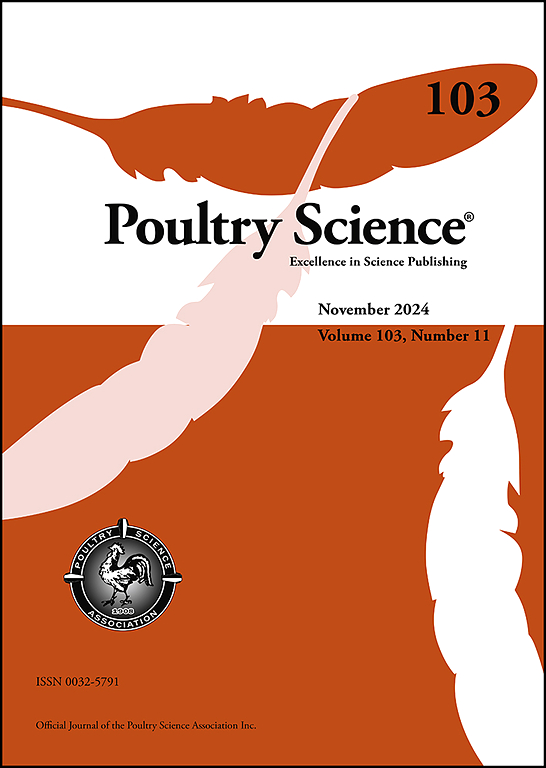鸭瘟病毒的比较基因组分析揭示了疫苗与泰国当代野地分离株之间的进化差异。
IF 4.2
1区 农林科学
Q1 AGRICULTURE, DAIRY & ANIMAL SCIENCE
引用次数: 0
摘要
鸭瘟病毒(DPV)是一种甲疱疹病毒,在水禽中引起严重发病率和死亡率,并对亚洲各地的养鸭业构成持续威胁。这项研究首次报道了来自泰国的DPV分离株的完整基因组特征,包括一种商业疫苗株(DPVac)和两种当代现场分离株(DPV7和DPV8)。利用Oxford Nanopore Technologies (ONT)和Illumina-ONT杂交测序技术,我们成功地组装了160,511至163,789 bp的完整基因组。与欧洲参考菌株DEV 2085具有较高的同源性。比较基因组分析揭示了UL和US区域的结构差异。基于核心基因组单核苷酸多态性(SNPs)的系统发育重建将DPV7置于中国最近的田间菌株的一个分支中,而DPV8与来自德国、印度和孟加拉国的疫苗相关谱系紧密聚集。值得注意的是,SNP分析确定了DPV7中独特存在的多个毒力相关突变。这些突变在DPVac和DPV8中不存在,它们位于参与病毒复制(UL54)、宿主免疫逃避(UL41、UL14)、病毒进入(UL44、UL8)、细胞内运输(US3、US8)和毒力调节(LORF3)的基因内或附近。这些发现表明,DPV7可能在免疫压力下进行适应性进化,从而可能影响疫苗的有效性。我们的研究结果强调了持续的分子监测和功能研究的迫切需要,以评估新出现的DPV变异的影响。本文报道的全基因组序列为未来研究DPV在流行地区的进化、诊断和疫苗开发提供了宝贵的资源。本文章由计算机程序翻译,如有差异,请以英文原文为准。
Comparative genomic analysis of duck plague virus reveals evolutionary divergence between vaccine and contemporary field isolates in Thailand
Duck Plague Virus (DPV), an alphaherpesvirus, causes significant morbidity and mortality in waterfowl and remains a persistent threat to duck farming across Asia. This study reports the first complete genomic characterization of DPV isolates from Thailand including a commercial vaccine strain (DPVac) and two contemporary field isolates (DPV7 and DPV8). Using Oxford Nanopore Technologies (ONT) and hybrid Illumina-ONT sequencing, we successfully assembled complete genomes ranging from 160,511 to 163,789 bp. The assembled genomes showed high sequence identity to the European reference strain DEV 2085. Comparative genomic analysis revealed structural differences in the UL and US regions. Phylogenetic reconstruction based on core genome single-nucleotide polymorphisms (SNPs) placed DPV7 within a clade of recent Chinese field strains, while DPV8 clustered closely with vaccine-associated lineages from Germany, India, and Bangladesh. Notably, SNP analysis identified multiple virulence-associated mutations uniquely present in DPV7. These mutations, absent in DPVac and DPV8, were located within or near genes involved in viral replication (UL54), host immune evasion (UL41, UL14), viral entry (UL44, UL8), intracellular trafficking (US3, US8), and virulence modulation (LORF3). These findings suggest that DPV7 may be undergoing adaptive evolution under immune pressure, potentially compromising vaccine effectiveness. Our results underscore the critical need for continuous molecular surveillance and functional studies to evaluate the impact of emerging DPV variants. The complete genome sequences reported herein provide a valuable resource for future research on DPV evolution, diagnostics, and vaccine development in endemic regions.
求助全文
通过发布文献求助,成功后即可免费获取论文全文。
去求助
来源期刊

Poultry Science
农林科学-奶制品与动物科学
CiteScore
7.60
自引率
15.90%
发文量
0
审稿时长
94 days
期刊介绍:
First self-published in 1921, Poultry Science is an internationally renowned monthly journal, known as the authoritative source for a broad range of poultry information and high-caliber research. The journal plays a pivotal role in the dissemination of preeminent poultry-related knowledge across all disciplines. As of January 2020, Poultry Science will become an Open Access journal with no subscription charges, meaning authors who publish here can make their research immediately, permanently, and freely accessible worldwide while retaining copyright to their work. Papers submitted for publication after October 1, 2019 will be published as Open Access papers.
An international journal, Poultry Science publishes original papers, research notes, symposium papers, and reviews of basic science as applied to poultry. This authoritative source of poultry information is consistently ranked by ISI Impact Factor as one of the top 10 agriculture, dairy and animal science journals to deliver high-caliber research. Currently it is the highest-ranked (by Impact Factor and Eigenfactor) journal dedicated to publishing poultry research. Subject areas include breeding, genetics, education, production, management, environment, health, behavior, welfare, immunology, molecular biology, metabolism, nutrition, physiology, reproduction, processing, and products.
 求助内容:
求助内容: 应助结果提醒方式:
应助结果提醒方式:


